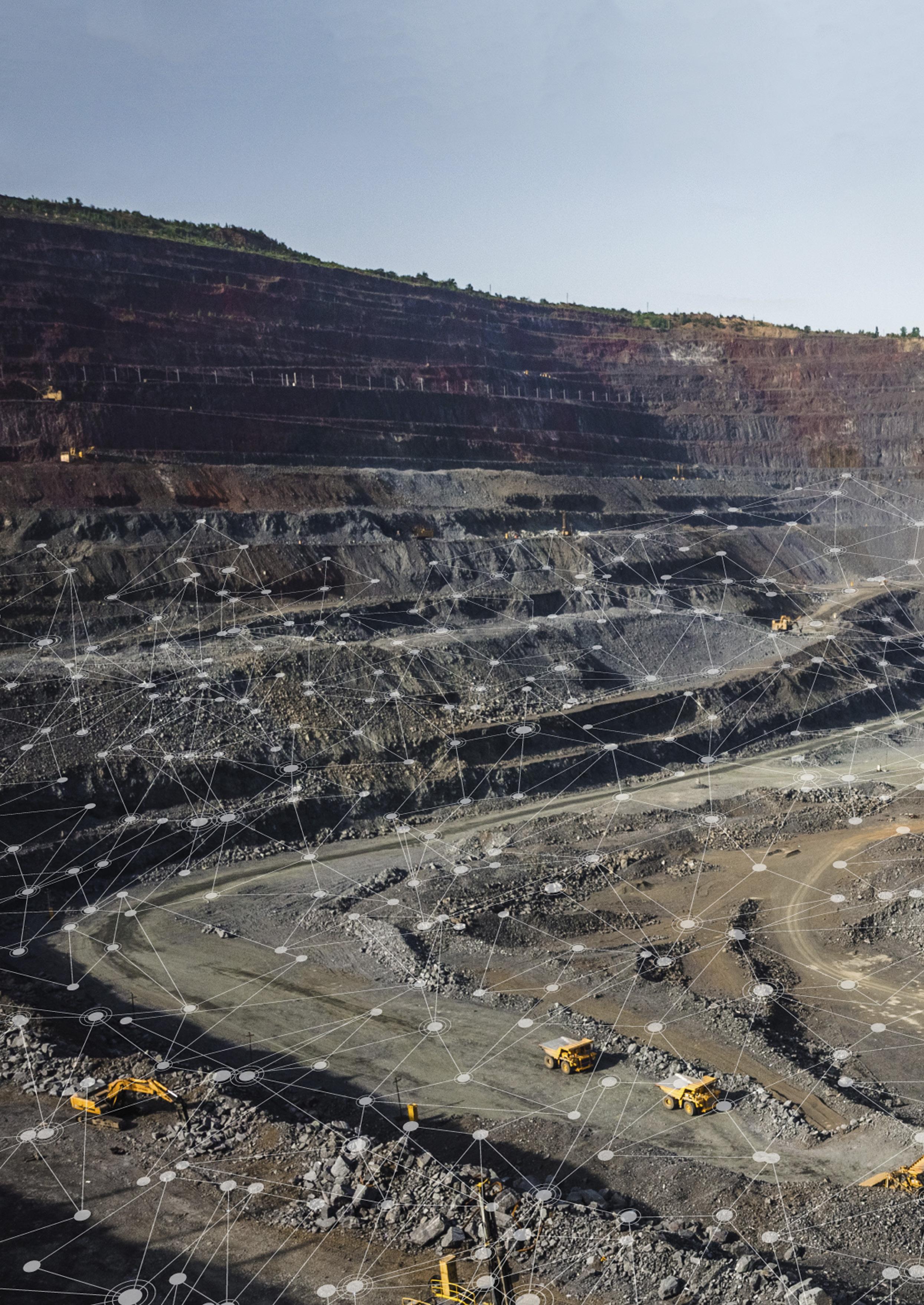
9 minute read
Stay Safe, Stay Connected
Figure 1. Mines are constantly changing and evolving, requiring a network solution that is flexible, not rigid or reliant on cumbersome infrastructure.
Marnus Kruger, Rajant Corporation,
South Africa, provides an overview of some of the latest advancements that are bringing high-bandwidth, flexible, reliable, self-healing networks to mining.
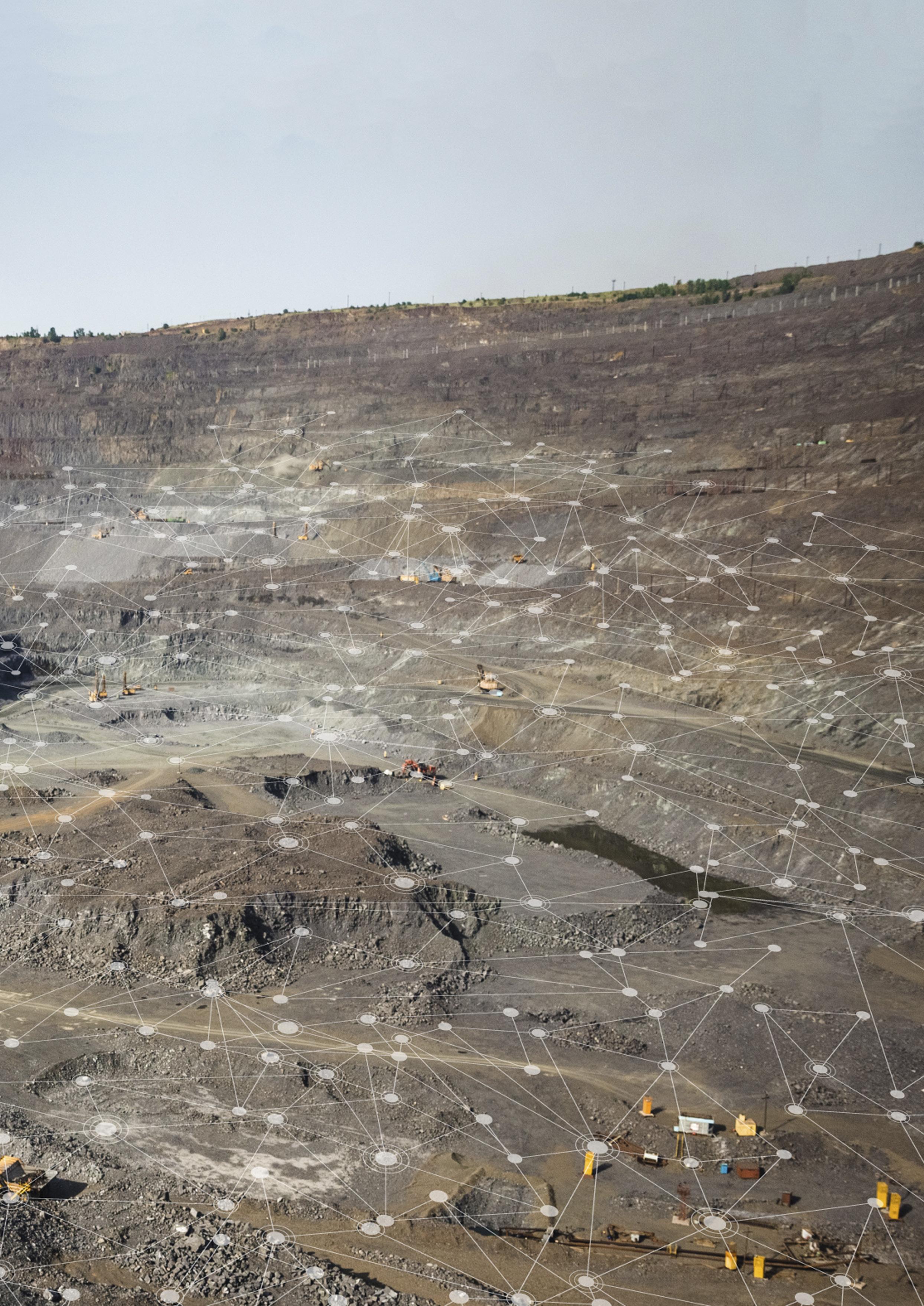
Accurate statistics for occupational accidents and fatalities in mining are hard to come by, as different countries and companies use different reporting methods and standards. Nevertheless, there is a consensus that mining operations are dangerous environments. When significant disasters with multiple fatalities occur, such as the Brumadinho tailings dam collapse in 2019, or the Wai Khar Jade Mine in Myanmar last year, they hit the headlines worldwide. But, every year, there are fatalities and injuries. Indeed, the International Council on Mining and Metals (ICMM) has been keeping injury and fatality records since 2012.
The 26 members of the ICMM, representing one-third of the global industry, have committed to “improving their health and safety performance to eliminate all fatalities towards achieving our ultimate goal of zero harm.” While the general trend is in the right direction – total recordable injury (TRI) frequency rate (number of injuries per million hours worked) declined to 2.94 in 2020 from 5.07 in 2012,1 and the fatality rate (number of deaths per million hours worked) declined to 0.018 from 0.033 over the same period – there is still some way to go to meet the goal.
Miners are exposed to more occupational hazards than those employed in many other industries. At the extreme, they may have to deal with explosions and cave-ins. Fortunately, those are relatively rare occurrences. However, regularly, they may be exposed to high temperatures, toxic fumes, noise, vibration, and dust. These are very stressful conditions, particularly for underground miners, which may lead to accidents. These can be due to improper use of machinery or vehicles. Or, by a simple, momentary lapse in attention that results in a fall, burns, or other accident. In addition, the speed with which conditions can change in a mine make them inherently dangerous places to be.
It, therefore, makes sense that anything that can help keep workers out of harm’s way will be very beneficial; not only for the workers, but also for the industry as a whole, and mine owners in particular. As well as the human cost, injuries and death carry a financial expense in terms of loss of productivity and higher insurance costs. In addition, downtime for any reason – be it mechanical, environmental, or human – also causes loss of income. Without autonomy and a reliable communications network, even a minor issue may mean that a miner has to return to base to report the problem and receive instructions, which can cause operational delays.
Technology – connecting devices and people
Technology, specifically the Industrial Internet of Things (IIoT), is already playing a significant role in helping to reduce mining accidents and downtime. When machinery, sensors and people are interconnected, the whole environment changes. Autonomous vehicles and machinery improve efficiency and keep miners out of harm’s way. Sensors can monitor temperature and air quality to ensure adequate ventilation. Wearable devices in combination with sensors will alert workers when they are entering an unsafe area. In 2017, a World Economic Forum investigation reported that digitisation in mining and metals could result in 1000 lives saved, as well as 44 000 accidents being avoided over the following 10 years.2
As more and more devices get interconnected, the volume of data transmitted grows exponentially. When processed using artificial intelligence (AI) and machine learning (ML), management gains greater insight into the conditions and operations of the mine. In addition, real-time telemetry enables them to monitor and control autonomous and remote-controlled vehicles, machinery and processes, leading to more efficient use of resources and better adherence to safety standards. As risks are mitigated, workers are moved out of harm’s way and fatigue is reduced, leading to fewer accidents.
Dynamic wireless networks
While digitalisation and the IIoT bring improvements to mines, the actual functionality of connected devices, autonomous vehicles, and machinery is entirely dependent on the robustness, reliability, and flexibility of the network that they are connected to. This is where wireless mesh networks stand out.
Setting up a wireless network anywhere presents challenges. Transmission may be blocked in some locations, connections may be dropped, and in a traditional WiFi or point-to-multi-point (P2MP) or LTE network, a single point of failure presents a real risk. This risk is simply not tolerable in mines. Autonomous vehicles and machinery need the network to be constantly up; even a momentary pause will mean that operations have to stop. The ability to transmit video is also a prime requirement for mining as robots and cameras are used to provide visibility into underground locations, so high bandwidth for the upload is also a necessity. Most networking technology is asymmetrical, meaning that the upload is much slower than the download, and thus not well suited to mining applications. As more and more devices are connected, the need for bandwidth increases, so the network has to be able to expand easily without interruption to existing connectivity. Underground, the network has to overcome uneven surfaces and thick walls and be impervious to changing temperatures and dusty environments, all of which present various propagation challenges. On the surface, the network also faces propagation issues primarily due to changing topography and weather. Therefore, it also has to be capable of extending over many miles and being easily redeployed as the mine moves. Traditional wireless networks rely on fixed transmission points, so they cannot be easily reconfigured and expanded. Furthermore, when they are able to be upgraded, it often means service interruptions. Frequently, there is no built-in redundancy, so they cannot provide the crucial reliability needed for autonomous machinery, where even momentary loss of connection is unacceptable.
Decentralised wireless mesh networks
Decentralised wireless mesh networks are an answer to these problems. In a true mesh network, there is no single point of failure, as each node acts independently, forming connections to other nodes. If one node becomes temporarily unavailable or goes down it has no impact on the network as a whole. The network is self-healing – if the next node becomes unavailable, the transmitting node simply reorganises to find another efficient path and transmits the data to the next node in that routing. Nodes are installed on machinery, vehicles, wearables and drones, as well as in fixed locations. This means that the network is incredibly flexible; as vehicles and people move around, so too does the network. As operations expand, involving more people and equipment, more nodes are added, so the network grows in sync with the operation. Similarly, if the mining moves to a new location, so does the network. With few or no fixed nodes, the network is essentially portable. This means that wireless mesh networks are far easier to set up than traditional fixed networks, and they are inherently more versatile, reliable, and flexible. Both on the surface and underground, some mines are incredibly dynamic. In longwall mining, for example, the mine is constantly being reconfigured as the mine face moves forwards and the rear sections are allowed to collapse. A mesh network can move with the mine; as new areas open up, the nodes are redeployed to these new locations, retaining constant connectivity for the mine with no interruption of service.
Figure 2. Wireless mesh provides a solution for dynamic, real-time data, video, and voice communications underground with full mobility from autonomous systems and staff on the go.
Autonomous inspections
One of the key benefits of automation is the ability to keep personnel safe and send machines in to do the dangerous work. Work, in many cases, would not be possible without robots and the best
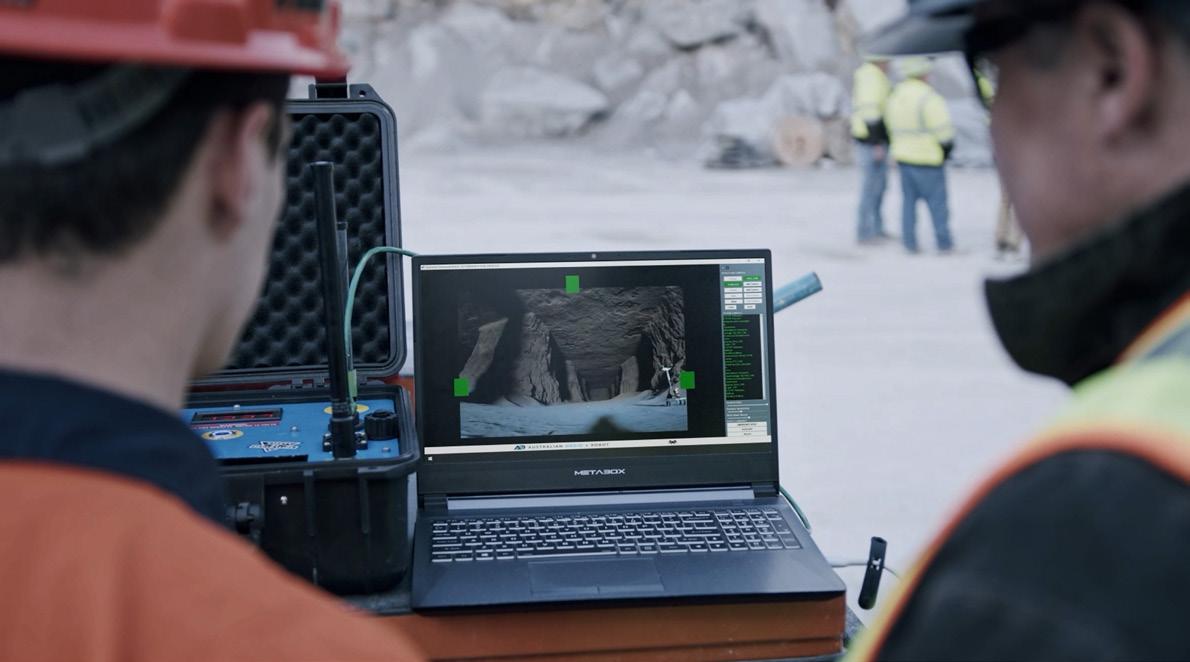
wireless mesh networks. Nowhere has this been more clearly illustrated than in two mine inspections carried out by Rajant and Australian Drone + Robot (ADR) in Australia and the US.
Case study: Australia
The first inspection took place at an abandoned mine in Queensland, where it was necessary to determine the state of the bulkhead, but too risky to send people in to do so. So, ADR robots were sent in. However, without superior communications not only would it not have been possible to control the robots, no findings would have been transmitted. Rajant set up its Kinetic Mesh® Network, which enabled the transmission of live-stream 4K video and light detection and ranging (LiDAR) data – LiDAR is a remote sensing technique that uses laser to create a 3D map of surfaces.
Case study: USA
Following their success in Australia, Rajant and ADR collaborated to conduct the deepest remote underground inspection ever recorded. In summer 2021, this occurred at a collapsed limestone mine in the Southeastern US. The existing two-way radio system that ran over a leaky feeder had been destroyed, but regardless would not have had the bandwidth necessary to perform the inspection. Rajant’s Kinetic Mesh network provided low-latency, high-bandwidth connectivity to control a fleet of 10 robots. The robots were equipped with Rajant BreadCrumb radio nodes and created the network from scratch, daisy-chaining communications between them. LiDAR and video at 80 Mbps were transmitted from 1.7 km underground.
Without robots and a wireless mesh network that could be installed without any existing infrastructure, this mine may have remained closed for a long time. As it was, within a week of the inspection, the Mining Safety and Health Administration (MSHA) had cleared the mine to start remediation work and put employees back in a safe working environment.
Conclusion
The mining industry continues to invest in various technologies, ranging from standard fleet monitoring to advanced teleoperation and collision avoidance solutions. It has become abundantly clear that digitalisation and IIoT will have a considerable part to play in the coming years.
Operators require a network that not only keeps operations running smoothly but one that seamlessly keeps staff, equipment, and applications functioning 24/7, 365 days a year. The sector needs to foster innovation as a matter of urgency.
A reliable network at the forefront empowers a bright future for the mining industry.
References
1. ‘Safety Performance: Benchmarking progress of ICMM company members in 2020’, International Council on Mining and Metals (ICMM), (June 2021), www.icmm.com/website/publications/pdfs/ health-and-safety/2021/benchmarking-safety-data-2020.pdf 2. ‘Digital Transformation Initiative: Mining and Metals Industry’,
World Economic Forum, (January 2017), https://reports.weforum.org/ digital-transformation/wp-content/blogs.dir/94/mp/files/pages/files/ wef-dti-mining-and-metals-white-paper.pdf
MINE MORE UPTIME
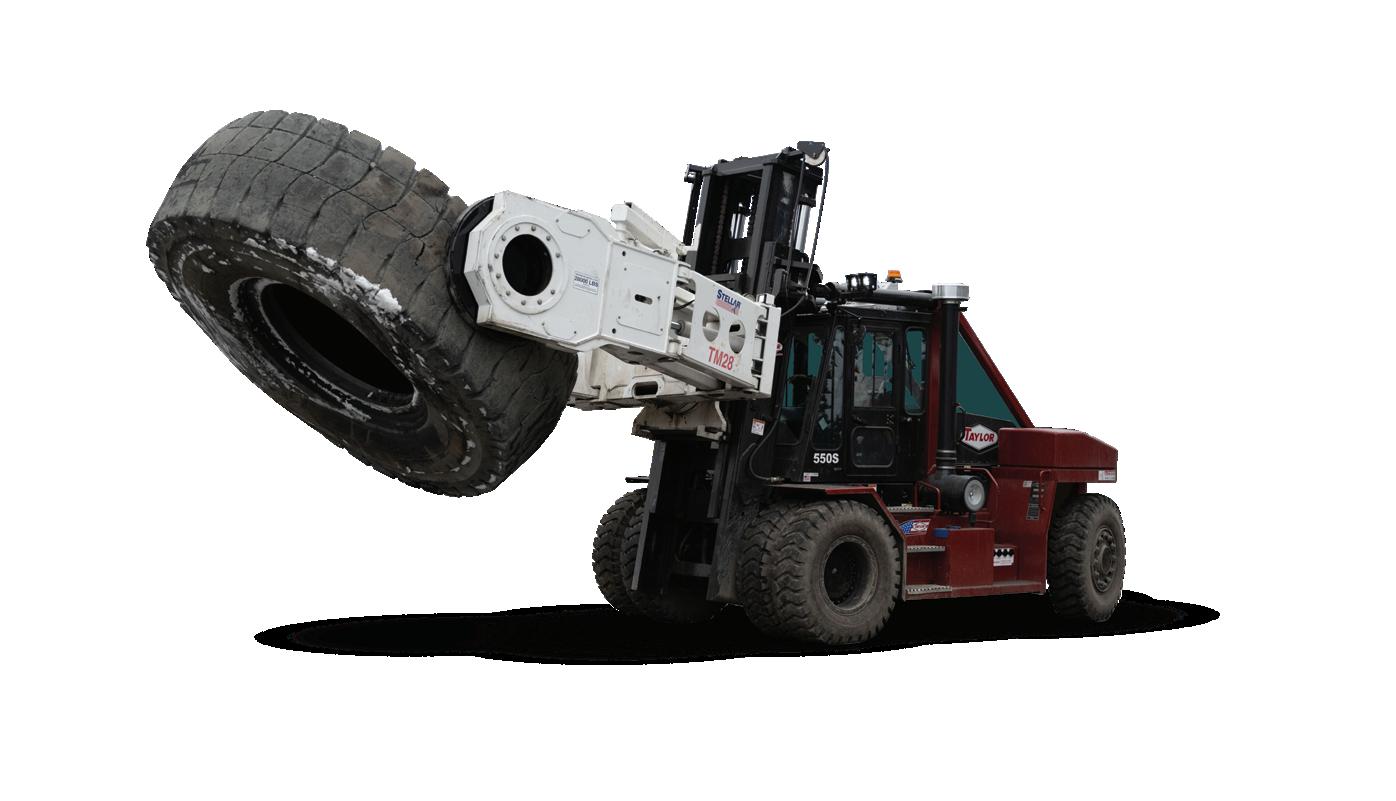
Uptime is everything. The industry-first modified A-frame stabilizer on Stellar® Large OTR Service Trucks ensures reliable servicing of differing widths. The TM28 Tire Manipulator is built for heavy-duty mining work with a rated capacity of 28,000 pounds, 110-degree body rotation, 360-degree pad rotation and an optional side shift for perfect alignment with the hub.

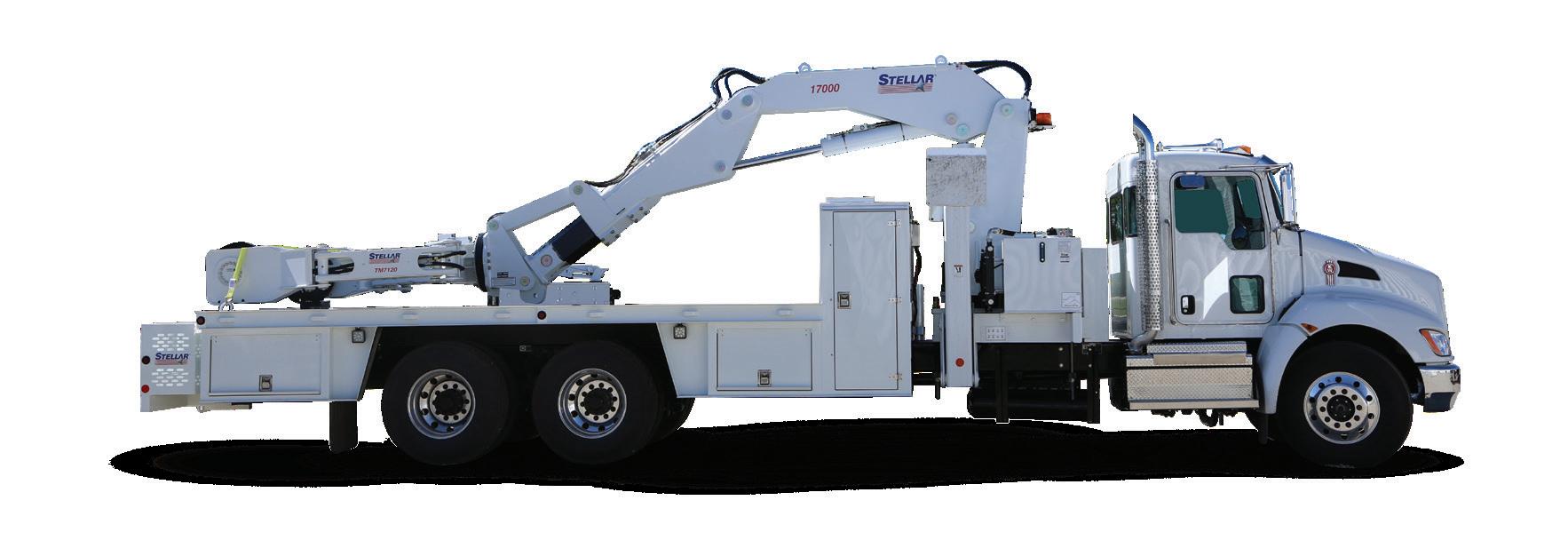
TM28
LARGE OTR SERVICE TRUCK










